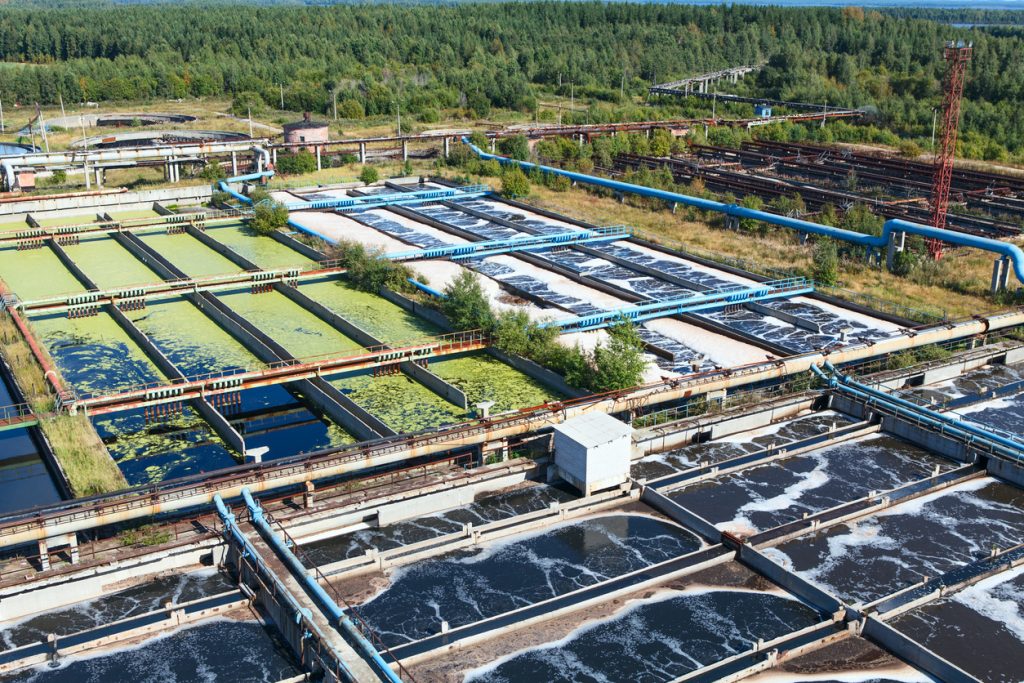Strategic Approaches to Improve Drainage Treatment Performance and Decrease Ecological Effect
In the world of waste water treatment, the mission for improved effectiveness and reduced environmental effect is a continuous obstacle that requires tactical remedies. The combination of innovative treatment technologies, energy-efficient processes, source recuperation approaches, improved nutrient removal strategies, and smart surveillance and control systems represents a multifaceted framework for resolving these pushing problems.
Advanced Therapy Technologies
Innovative membrane layer filtering systems have reinvented innovative wastewater treatment processes, considerably improving the elimination of pollutants. This modern technology has shown to be extremely effective in eliminating a large variety of pollutants, including drugs, heavy metals, and natural compounds, which are frequently challenging to eliminate via traditional therapy methods.
Additionally, membrane filtration systems provide numerous benefits over standard therapy methods. In addition, these systems are extremely versatile and can be easily integrated into existing therapy plants or made use of as standalone systems for decentralized applications.
Energy-Efficient Procedures
The integration of energy-efficient procedures in wastewater therapy systems is vital for maximizing resource use and decreasing operational costs. By carrying out energy-efficient modern technologies, therapy plants can dramatically decrease their carbon footprint and overall environmental influence. One key approach to boosting power efficiency in wastewater treatment is the use of innovative oygenation systems, such as fine bubble diffusers or surface area aerators, which can boost oxygen transfer efficiency and reduce power usage. Additionally, incorporating energy recuperation systems, like anaerobic digestion for biogas production or making use of excess warmth for thermal processes, can help counter power needs and advertise sustainability.
Additionally, enhancing procedure control and automation through using advanced sensors and keeping track of systems can boost general power efficiency by changing operations in real-time based upon actual need and problems. Applying energy audits and on a regular basis monitoring power performance indicators are essential techniques to recognize areas for renovation and track energy-saving initiatives properly. Overall, the fostering of energy-efficient procedures in wastewater treatment not just benefits the environment however additionally contributes to lasting price financial savings and functional sustainability.
Resource Recovery Approaches
With an emphasis on enhancing resource application and sustainability in wastewater treatment systems, the implementation of resource healing approaches becomes an essential aspect in improving operational performance. Resource healing techniques in wastewater treatment include the identification and extraction of useful sources from the waste stream, thus transforming what was when considered waste into a beneficial property. By implementing source recovery techniques such as nutrient removal and recovery, energy generation from raw material, and the manufacturing of reusable water, wastewater treatment plants can minimize environmental impact while taking full advantage of effectiveness.

Improved Nutrient Removal Techniques
Executing innovative nutrient removal techniques is vital for enhancing the efficiency of wastewater treatment systems. One of the vital techniques made use of for improved nutrient removal is the process of organic nutrient elimination (BNR), which involves the removal of nitrogen and phosphorus through organic procedures.

Along with BNR, progressed treatment methods such as membrane bioreactors (MBRs) and created wetlands can likewise be utilized to enhance nutrient removal performance. MBRs make use of membrane layers to attain high-grade effluent criteria by successfully getting rid of nutrients and suspended solids. Built wetlands mimic natural wetland processes top article to get rid of nutrients with plant uptake, microbial activity, and sedimentation. By integrating these innovative nutrient elimination strategies into wastewater therapy municipalities, systems and markets can successfully lower nutrient pollution and safeguard the atmosphere.
Smart Surveillance and Control Solution
Making use of advanced innovation, the combination of smart monitoring and control systems transforms the operational efficiency of wastewater therapy centers. These systems integrate advanced sensing units and information analytics to continually monitor essential specifications such as pH degrees, turbidity, dissolved oxygen, and flow prices in real-time. By gathering and assessing this information, operators can obtain valuable insights into the efficiency of the therapy procedures, allowing positive modifications to enhance therapy effectiveness.
Smart monitoring and control systems also support remote monitoring capacities, allowing operators to access real-time information and control functions from off-site locations. This remote access enhances functional versatility and responsiveness, allowing speedy interventions in case of system breakdowns or variations in influent quality. The anticipating upkeep capabilities of these systems assist prevent tools failures and decrease downtime, ultimately enhancing the total reliability of wastewater therapy operations.
Final Thought
In final thought, calculated approaches such as advanced therapy modern technologies, energy-efficient procedures, resource recuperation strategies, improved nutrient removal methods, and smart monitoring and control systems play an important duty in boosting wastewater therapy effectiveness and minimizing environmental effect. By applying these methods, wastewater treatment plants can enhance their total performance, minimize power consumption, recuperate valuable resources, and make certain compliance with ecological laws. These techniques are important for lasting and reliable wastewater monitoring techniques.

In conclusion, strategic approaches such as innovative treatment modern technologies, energy-efficient procedures, source healing strategies, improved nutrient removal techniques, and clever surveillance and control systems play an important duty in boosting wastewater treatment efficiency and reducing ecological impact.